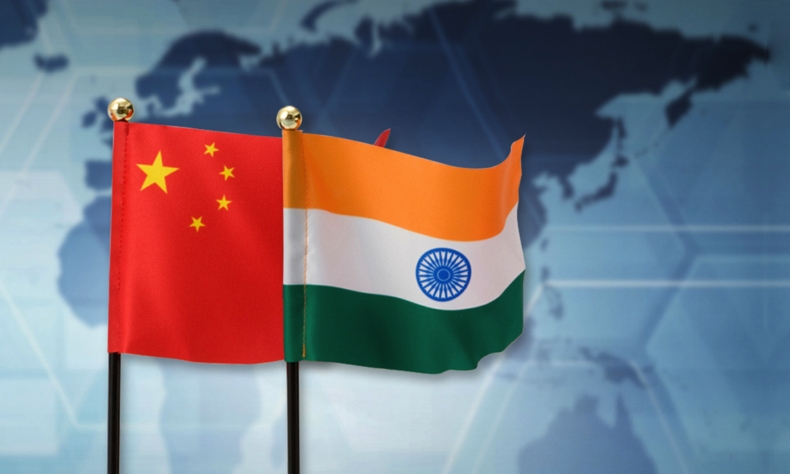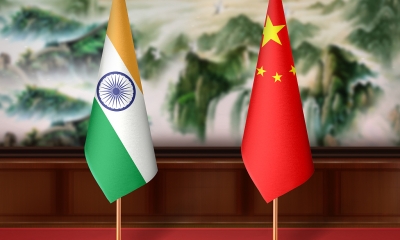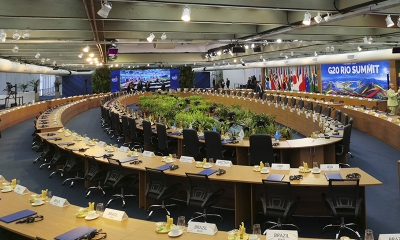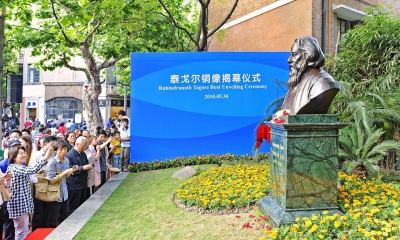High Time for India and China to Work Cooperatively to Realize Asia’s Century

The general picture of Sino-India friendship will not stagnate due to the difficulty posed by one issue or incident at one time.
No one could have put a simple proposition better than what Chinese State Councilor and Foreign Minister Wang Yi did last week on the mending of the Sino-India relationship which has been uneasy following the tense border skirmishes along the Line of Actual Control (LAC) in Ladakh region last year.
On March 7, the Chinese foreign minister held a news conference on the sidelines of the fourth session of the 13th National People’s Congress in Beijing, the country’s top legislature, to explain China’s diplomatic agenda for 2021 to the outside world.
Wang Yi sets tone for future of Sino-Indian ties
Although the virtual media conference was dominated by questions on the US-China relationship in post-Trump era, China-Russia bilateral relations, COVID-19 vaccine cooperation, Hong Kong electoral system, global governance, the Belt and Road Initiative and some major domestic events to be held this year, Wang also spoke about the importance of building a “constructive relationship” with India. He offered a fresh blueprint to clear the air on Sino-Indian bilateral relations after the prolonged border standoff in the Ladakh border area.
The foreign minister exhibited both hope and confidence on relations between Asia’s two biggest countries. “The boundary dispute, an issue left from history, is not the whole story of the China-India relationship,” Wang said. The candid tone of his remarks emphasized that China values its friendship with India and will work to manage its differences with its neighbor.
Calling the boundary dispute as not the “whole story” of the Sino-Indian relationship, he said that China and India are each other’s friends and partners, not threats or rivals, so the two sides need to help rather than undercutting each other and intensify cooperation rather than harboring suspicions. Surely, the points he made hold much significance to have a strong relationship, as long as both sides strive to build trust instead of fighting each other.
Without directly mentioning unilateral actions such as imposing a range of economic measures against Chinese firms and apps as well as tightening the curbs on Chinese investment taken by the Narendra Modi-led Bharatiya Janata Party (BJP) government following the border confrontation at the Galwan Valley since May last year, the Chinese minister rightly pointed out that two countries together can bring greater benefits to the 2.7 billion people in China and India, make greater contributions to the advent of the “Asian Century”.
Truly, in terms of their growing power and economic influence, Sino-Indian ties may indeed be the most influential relationship of the 21st century. As such, the need of the hour is that, the two countries should significantly expand spheres of economic-trade relations, mutual trust, people-to-people friendship in order to bring back bilateral relations to the right track of healthy and steady growth for the “historic mission” of bettering lives for the two peoples.
The LAC disengagement is a welcome effort to repair the Sino-India ties
Fortunately, the months-long border crisis came to end as the two Himalayan neighbors agreed to withdraw their troops from disputed areas of the Ladakh border after the several rounds of diplomatic and military talks between the two sides. Accordingly, the disengagement process which began on both Northern and Southern banks of Pangong Tso lake on February 11 completed on February 19 followed by the tenth round of Corps Commander level talks between two armies on the Chinese side of the Moldo-Chushul on February 20 which had “candid and in-depth exchange of views on the remaining issues along the LAC in the western sector” as per the words of India’s external affairs ministry spokesperson Anurag Srivastava. The Pangong disengagement suggests that both sides are now willing to create a positive atmosphere for forward movement in bilateral ties that have been affected and disrupted much by the border conflict in the past year.
However, although the majority of China-experts and some in the political opposition in India echoed their skepticism on the efficacy of the disengagement agreement by questioning how much India has compromised for peace with China, it is unrealistic to expect a permanent solution to the sticky border issue in the near future, so “peaceful negotiation” is very important to maintain peace along the 3,488-km-long border between the two Asian giants. Furthermore, after the completion of the military disengagement in Ladakh, the two countries moved on a political dialogue over phone led by Wang Yi and Indian Foreign Minister S. Jaishankar on February 25 in which the two ministers reiterated that the two countries should work together to bring greater benefits to the two peoples. It’s really encouraging to hear that Wang urged India to meet China halfway. Since the border conflict is primarily a legacy of colonialism rather than a Chinese creation, it is hoped that India should come back to negotiation and strengthen crisis management instead of taking unilateral actions.
China displaces the US to return as India’s top trade partner in 2020
It should be noted here that in the past two years the Modi government has adopted an aggressive diplomacy to China by embracing former US President Donald Trump’s flip-flopping “South Asia Policy”. As such, following the stand-offs at multiple points at the LAC in Ladakh region last year, PM Modi announced “lockdown” on Chinese investments to prevent “dragon’s paw” in its domestic market. But the irony is that despite Modi’s “Aatmanirbhar Bharat” (a self-reliant India) push, China displaced the US and regained its position as India’s largest trade partner in 2020, due to New Delhi’s reliance on machines imported from China and muted demand for goods from the US in the middle of the pandemic. According to provisional data from India’s commerce ministry, Sino-India two-way trade stood at $77.7 billion last year, while bilateral trade between the US and India came in at $75.9 billion.
In the first nine months of India’s fiscal year from April to December 2020, India exported $15.3 billion of goods to China while importing $45.4 billion from China. Such numbers clearly indicate that India is in need of substantial Chinese investment in order to transform its weaker economy by exploring new avenues through trade and investment with China in the post-pandemic period. On March 7, an opinion piece of Global Times entitled “Hard reality that India cannot dodge when making development policy” had rightly noted: “Roaring nationalism cannot become a cure for the Indian society to solve its problems. New Delhi cannot scapegoat Beijing for its own governance woes. And leading the whole society to hate China will only harm it.” It is hoped that India’s China policy should not be lost in the so-called “patriotic” sentiments incited by some people that will only beleaguer its economy and, of course, its foreign policy should not be kidnapped by the US.
India, China should join hands to realize “Dragon-Elephant Tango”
In the current era, Sino-India relations are now at a new crossroads. Maintaining solid friendship serves best the fundamental interests between the two largest developing neighbors which is essential for making this century the “Asian Century”. The general picture of Sino-India friendship will not stagnate due to the difficulty posed by one issue or incident at one time. During his second visit to India in October 2019, Chinese President Xi Jinping rightly emphasized, the “Dragon-Elephant Tango” between the two countries has become the only path for bilateral ties, stressing that the world’s two most populous countries should shoulder the responsibility to maintain global stability.
It is hoped that dark clouds of mistrust must vanish and the two countries as neighbors, friends and partners should work harder through more grounded activities and cooperation projects to inject more positive energy into Sino-India relations which is the common aspirations of the two peoples and an irreversible trend.
 Facebook
Facebook
 Twitter
Twitter
 Linkedin
Linkedin
 Google +
Google +







